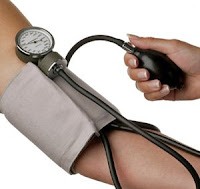Nursing Key outcomes, Nursing interventions, and patient teaching Nursing Care Plans for Chronic Renal Failure
Key outcome for patients with CRF, patients will:
- Report increased comfort.
- Maintain hemodynamic status.
- Remain oriented to person, place, time, and situation.
- Maintain fluid balance.
- Verbalize appropriate food choices according to his prescribed diet.
- Maintain adequate ventilation and oxygenation.
- Demonstrate skill in managing the urinary elimination problem.
- Use support resources and exhibit adaptive coping behaviors.
- Resume sexual activity to the fullest extent possible.
- Maintain adequate urine output.
- Verbalize having feelings of control over condition and own well-being.
- Remain free from signs or symptoms of infection.
- Avoid or minimize complications.
- Family members will demonstrate adaptive coping behaviors.
- The patient's oral mucous membrane will remain intact.
- Family members will verbalize the effects of the patient's condition on the family unit.
Nursing interventions Nursing Care Plans for Chronic Renal Failure (CRF)
The widespread clinical effects of chronic renal failure require meticulous and carefully coordinated supportive care.
- Provide good skin care.
- Provide good oral hygiene
- Offer small, palatable, nutritious meals
- Monitor the patient for hyperkalemia. Watch for cramping of the legs and abdomen and for diarrhea.
- Carefully assess the patient's hydration status.
- Carefully measure daily intake and output.
- Monitor for complications.
- Encourage the patient to perform deep-breathing and coughing exercises to prevent pulmonary congestion
- Maintain aseptic technique.
- Carefully observe and document seizure activity. Periodically assess neurologic status.
- Observe for signs of bleeding.
- Report signs of pericarditis, such as a pericardial friction rub and chest pain.
- Schedule medication administration carefully.
- If the patient requires dialysis, check the vascular access site for patency and the arm used for adequate blood supply and intact nerve function.
- After dialysis, check for disequilibrium syndrome, a result of sudden correction of blood chemistry abnormalities.
Patient teaching Nursing Care Plans for Chronic Renal Failure (CRF)














